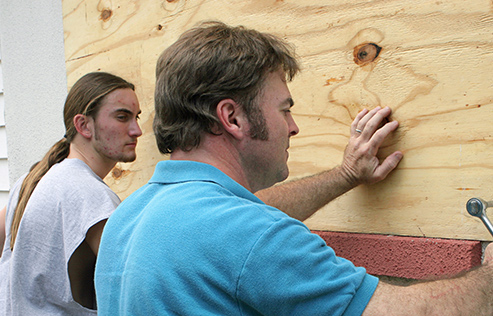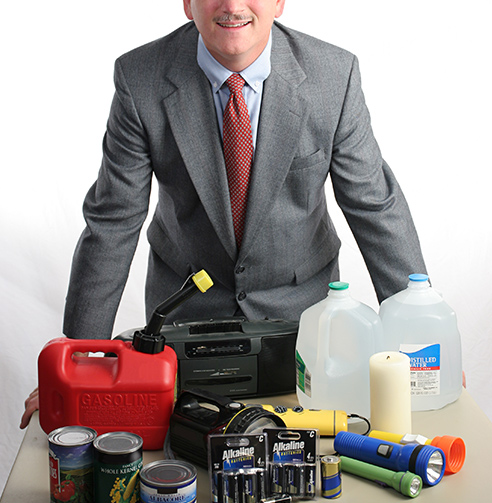
It’s that time of the year again. Hurricane season is upon us, and many people are starting to prepare for potential disasters. Natural disasters can be especially worrisome for friends and families of seniors who might be at risk. This vulnerable group is at high risk during disasters because they’re more likely to have medical conditions or live in fragile housing that can’t withstand severe weather.
Disaster preparedness tips will help you ensure your senior loved ones stay safe from harm. Not all emergencies require you to leave your home, so it’s important that you make an evacuation plan before assembling an emergency preparedness kit!
Special Plans
The best thing you can do to prepare for hurricane season is to do the most you can to prepare for the worst.
This includes:
- Take inventory of valuables in the event that a storm damages your home. This can be as simple as taking pictures or video with a camera on your phone.
- Make your home as weather-proof as possible, including cleaning out gutters and downspouts.
- Make sure that valuable items and important documents are within the range of any floodwaters.
- Make sure you plan for your evacuation ahead of time. Your emergency preparedness kit should be designed with portability in mind, so try making it as lightweight and small as possible. If you have a car, make sure to keep almost half a tank of gas during hurricane season to ensure you can quickly escape if necessary.
Social Support
During a disaster, social support is critical. You might have to evacuate, or you may stay with family. Either way, it’s important that your loved ones know where to find each other. For many older adults, a social network is all they have left.
Emergency Preparedness Tips
It can be hard for seniors to prepare for disasters. One of the most important things you can do is to keep an eye on the weather forecast before a disaster. Since older adults are at higher risk during a disaster, it is important to plan ahead and assemble an emergency preparedness kit that includes items they might need in case of evacuation – or if you will be unable to leave the home for any reason. Keep in mind that a natural disaster can also break infrastructure like power grids and water systems.
Make an Evacuation Plan
In order to make an evacuation plan, you’ll need to assess the risk of an imminent natural disaster. There are several red flags that can help you identify this, including if a storm is expected in your area within 24 hours, or if there has been heavy rainfall for more than two days straight and flooding is possible. Once you have assessed these risks, it will be easier to create a plan for evacuation.
 Disaster preparedness tips will help you ensure your senior loved ones stay safe from harm. Not all emergencies require you to leave your home, so it’s important that you make an evacuation plan before assembling an emergency preparedness kit!
Disaster preparedness tips will help you ensure your senior loved ones stay safe from harm. Not all emergencies require you to leave your home, so it’s important that you make an evacuation plan before assembling an emergency preparedness kit!
Emergency Preparedness Kit
To be prepared, assemble a disaster kit and make sure all members of the household know where it is located. The size of your disaster kit should depend on how many days you plan to stay at home during a storm.
Your emergency preparedness kit should include a way to stay in touch with family and friends, such as an old-fashioned landlinte phone or battery powered radio. For those who live alone, these devices are life savers!
A disaster emergency preparedness kit should include the following:
- Water (a gallon per person per day)
- Flashlight (battery-powered)
- Food (pre-prepared/canned goods, etc)
- Radio (battery-powered)
- First-Aid kit (up-to-date supplies)
- Spare batteries (for various electronics)
Additional Items

It’s important to have the basics while dealing with disaster. However, it’s in your best interest to be as prepared as possible for any situation, which would include additional necessities beyond food and water. These include:
- Personal care items, like toothbrushes, soap, shampoo, and other toiletries
- Spare clothes
- Blankets or sleeping bags
- Rain gear
- Light sticks
- Keys
- Glasses
Documents
Prepare a packet of documents which are easy to access.
This should include identification such as your passport and driver’s license, as well as your prescription medications,
or copies of them when possible. It can be helpful to keep these with you in case of an emergency so they would not
get lost. Items that may also be included are:
Legal Documents
During emergency evacuations, belongings are often left behind. Consequently, it’s important to have copies of your
will and any legal contracts that can’t be discarded easily.
Insurance Documents
On the same note, it’s important to have a folder containing copies of your auto insurance and homeowner’s
insurance so you can access them in an emergency.
Financial Documents
You might want to include your most recent bank statement, as well as information about your retirement accounts
and credit cards. Include tax records – these documents can prove both financial responsibility and identity.
Items for Seniors
In addition to the items you normally include in a preparedness kit for seniors, there are some other important items
that can sometimes be overlooked. When preparing for the worst case scenario or crisis in advance, there are some
things that can be packed away and ready for use from within the kit. These items should ideally reside inside a
waterproof envelope/folder/binder and should usually be included in your emergency supply kit:
 It’s important to have the basics while dealing with disaster. However, it’s in your best interest to be as prepared as possible for any situation
It’s important to have the basics while dealing with disaster. However, it’s in your best interest to be as prepared as possible for any situation
Medications
You will probably want to include an additional weeks’ supply of medications in your kit. To get that extra supply,
inform your doctor or other health care provider of the fact that you’re putting together an emergency supply.
Medical Equipment
However, you will want to have any emergency supplies for things pertaining to your essential medical equipment.
This could include:
- Batteries for hearing aids
- Spare pairs of glasses
- Spare dentures
- Equipment for monitoring blood sugar and blood pressure, if needed
- Spare oxygen tanks
There are many items that need to go in your kit, but it’s always helpful to have a few spares.
Medical Documents
As you are gathering important documents and items, be sure to include information about any medical needs you
have. Include basic information about you that might be needed should you need to evacuate or are evacuated.
The following is list of items that may be useful for an evacuation:
- Your blood type
- Any allergies you have
- A list of all conditions (medical health and mental health)
- Treatment you’re receiving
- Information about your medical equipment needs
- A list of your prescriptions (dosages, etc)
- A list of physicians and their contact information
- Copies of your insurance information (Medicare, Medicaid, etc)
- Service animal documentation (with shot records) if needed
If you follow these guidelines, you and your aging loved ones will be better prepared for a natural disaster.
Remember: The best way to prepare is to plan ahead.

 Disaster preparedness tips will help you ensure your senior loved ones stay safe from harm. Not all emergencies require you to leave your home, so it’s important that you make an evacuation plan before assembling an emergency preparedness kit!
Disaster preparedness tips will help you ensure your senior loved ones stay safe from harm. Not all emergencies require you to leave your home, so it’s important that you make an evacuation plan before assembling an emergency preparedness kit!